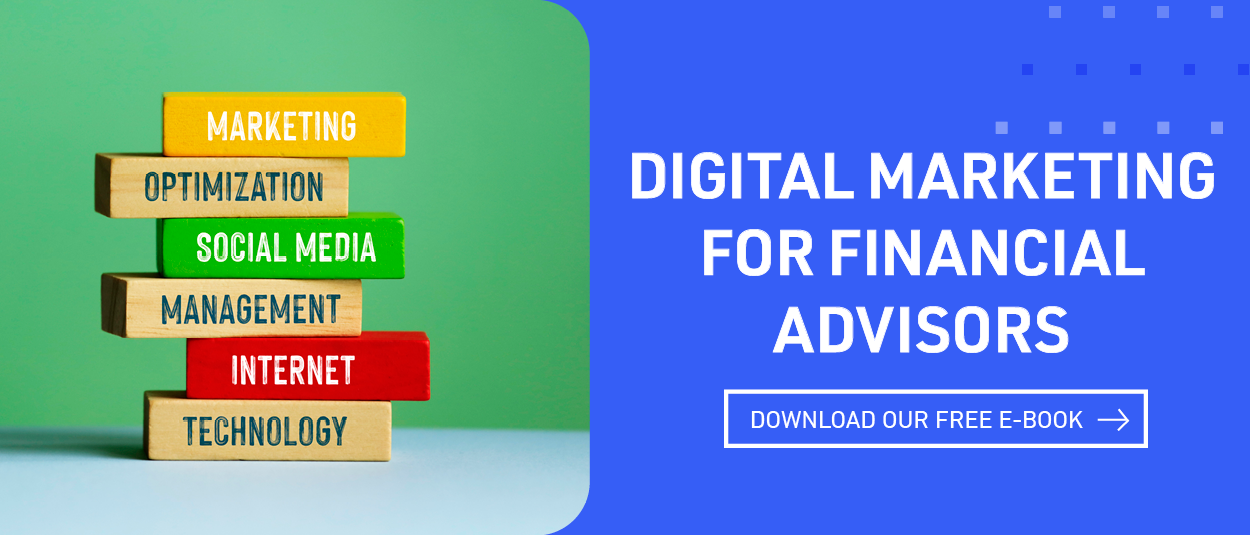

Best Zoom Practices for Financial Advisor Virtual Marketing
A lot of articles have been written about virtual marketing for financial advisors and the use of various technologies to facilitate virtual communications. For example, Zoom, Vidyo, and GoToMeeting are some of the more popular services. Here at Paladin, after some extensive testing, we prefer the Zoom software for communicating in the digital world.
Since there are a ton of articles that describe how to actually use these services, this article will outline the best marketing strategies for financial advisors when using video conferencing platforms.
Client Communications
Communicating with clients is what happens after you have won the relationship. As you might expect, when investors trust you enough to hire you, they will probably follow your recommendations for how you will interact with each other.
During Covid it is relatively simple to convince someone, who has already hired you, to interact virtually. The question is how will you communicate with current clients after the Covid restrictions have been lifted.
You, your clients, or both may prefer virtual communications because there are mutual benefits. Or, a percentage of your clients will prefer to revert back to traditional interactions (face-to-face) in the post-Covid era.
Other variables may also impact how you interact in the post-Covid era. For example, the location of the clients, their asset amounts, or their revenue potential. Just about every financial advisor has some virtual relationships. That’s because they have had clients relocate to remote locations and retain them as their advisors.
Interacting with Prospects
The real focus of this article is the way you interact with leads and prospects and how Zoom can facilitate those interactions.
What is the main difference between leads and prospects? A lead is someone who has given you their contact information, but there has been no contact. A prospect is someone where there has been contact and mutual interest has been established. They are interested in your services and they meet your requirements for a client at your firm - for example, they meet your minimum asset requirement.
Your challenge, if you decide to accept it, is to develop an effective strategy that enables you to convert prospects into clients using Zoom with no face-to-face interaction. This financial advisor marketing strategy should work while Covid is still a serious health risk and after when a high percentage of the U.S. population has been vaccinated or developed herd immunity.
Investor Choices
Your marketing challenge is much simpler if all of the prospects’ financial advisor alternatives are using the same virtual marketing tactics. We can call this a level playing field.
It is not a level playing field when some of the prospects’ choices are virtual and other choices are local advisors using traditional (face-to-face) marketing tactics.
So strategy number one, when applicable, is to offer prospects a choice. You ask them how they prefer to interact with their financial advisors. There is the brick & mortar approach that utilizes face-to-face meetings and there is the virtual approach that uses Zoom and other technologies.
There is a big caveat. You only offer this choice to local prospects who are within a reasonable driving distance of your office. Either they are close enough to drive to a face-to-face meeting or you are. Virtual communications are the only choice for more remote prospects and clients.
Two Marketing Strategies
We stress local competition because they have a competitive advantage when prospects want face-to-face communication and you are remote.
We recommend confronting this issue upfront when prospects meet your definition of remote and any form of face-to-face interaction is not an option.
You have two marketing strategies. One for local prospects and the other for remote prospects. What determines local prospects? It is the distance you or the prospect are willing to travel for a face-to-face interaction.
5 Best Practices for Virtual Marketing
There are five best practices financial advisors will want to integrate into their virtual marketing strategies.
1. The Qualifying Call
All advisors start their marketing process with a qualifying call to determine if there is mutual interest. From the financial advisors’ perspective, they want to know the prospects: Location, service requirements, available assets, and preferred method of interaction.
All of these criteria are qualifiers. For example, what if the prospect is remote and wants quarterly face-to-face interactions. Or, the prospect does not meet the advisors’ minimum asset requirements.
Perhaps these are objections that advisors can overcome. But, there may also be local competitors with lower minimum asset requirements.
2. The Interview
Once the investors are qualified the next steps are to build some rapport and schedule the first interview. This is where advisors gather more information from investors and investors gather more information from financial advisors.
This presentation should stress benefits over features. The more differentiating characteristics the better.
3. Transition to Virtual Marketing
It stands to reason if investors are comfortable with virtual marketing, they will also be comfortable with virtual servicing. So the name of the game is to get them comfortable with virtual interactions.
One very effective strategy is to create a scenario and ask them how they would react. Let’s assume the stock market is extremely volatile for several days or weeks. There is no end in sight and investors are extremely nervous.
What would this prospect do? Wait for the next quarterly meeting or contact the financial advisor by text, email, or telephone. Just about every investor will want to know how this market volatility is impacting them. They are not going to wait for a meeting, so they are already using virtual interactions to stay informed.
The advisor’s key to success is getting investors over the hump of past practices and introduce them to a new way to interact with or without any Covid concerns.
4. See & Hear for Better Retention
A high percentage of financial advisors rely on sales skills to win new clients. Their go-to strategy is usually a verbal sales pitch. Virtual marketing may impact this strategy for some advisors.
Our experience shows a best practice for financial advisor zoom marketing is to include a Powerpoint as part of your sales presentation. Then send the Powerpoint to the investors after the call.
People retain 25% of what they hear and 50% of what they see and hear. This best practice will create a competitive advantage in a virtual marketing environment. And, by sending them your presentation, they do not have to rely on memory in particular when they are interviewing multiple advisors.
5. Professional Live Camera Video
Financial advisors should conduct their Zoom calls with video so they are visible to investors and not just a voice over the Internet. This is common sense, but it also opens the door to some best practices.
Advisors should treat the call the same way they would a face-to-face interaction - this includes professional attire and a professional setting for the call. Be very aware of what the investors see because advisors want to make positive first impressions, which may also be a lasting impression.
Investors want conservative, financial experts handling their assets.
What are the Top Benefits?
Virtual interactions benefit investors and financial advisors. The main beneficiaries are investors.
Investors will rely on the Internet to gather the information they need to select the best financial advisor for their situation.
Investors make better selection decisions when they have objective information that is documented by financial advisors.
Financial advisors provide higher quality services when they are not traveling to and from marketing and service meetings.
The Internet is a treasure trove of information that benefits investors.
Information is communicated much faster when the method of communication is text, email, and telephone.

Jack Waymire, BA, MBA
Search Here
Categories
- AI (18)
- blogging (2)
- branding (1)
- content (12)
- custodians (1)
- Digital (345)
- email marketing (3)
- fcmo (2)
- fees (1)
- financial advisor marketing (62)
- Google (3)
- Ideas & Tips (78)
- Investor Experience (7)
- lead generation (7)
- linkedin (1)
- Marketing (371)
- newsletters (1)
- Online Transparency (2)
- search engine optimization (3)
- seo (9)
- Social Media (2)
- video (2)
- Websites (108)
- YouTube channel (2)
Recent Posts
-

-

How Financial Advisor Blogging Generates Thought Leadership and Leads
November 24, 2025 -

Top 5 Ways Digital Marketing Benefits Financial Advisors Seeking Leads
November 20, 2025 -

Trust Is The Biggest Online Marketing Challenge For Financial Advisors
November 17, 2025 -

Compliant Financial Advisor Bios Using AI Website Builders
October 22, 2025

